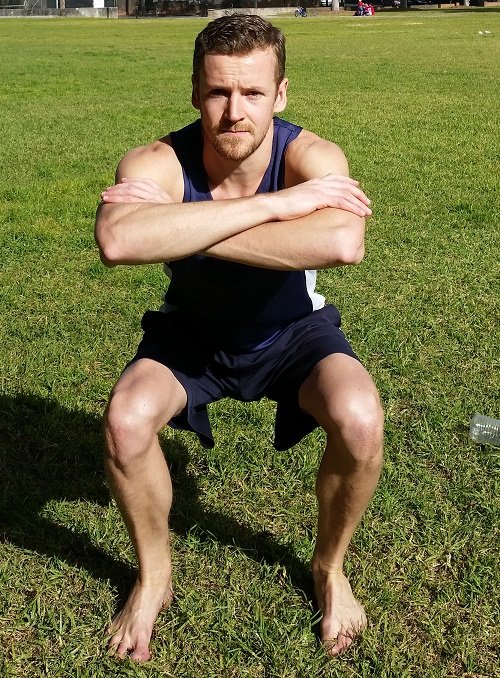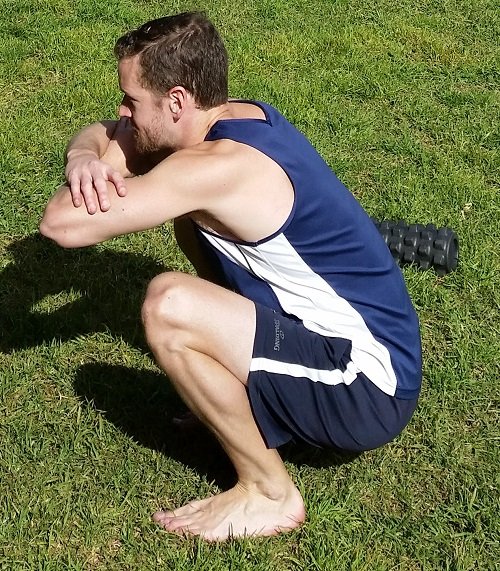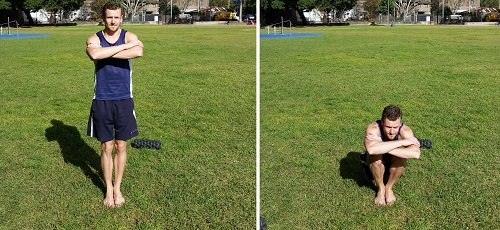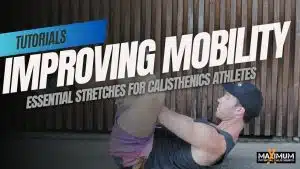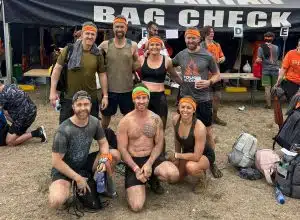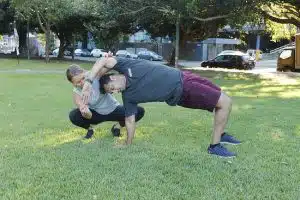[embedyt] https://www.youtube.com/watch?v=X1NI4VFCuDI&width=450&height=253&rel=0[/embedyt]
The bodyweight squat is probably one of the most forgotten natural exercises; watch a young child play and you will see that they perform perfect squatting technique without trying and will sit in the bottom position of a squat for a considerable time without discomfort.
Fast forward to adulthood and modern man has forgotten how to squat, your average sedentary adult can’t squat to the bottom position, let along hold it for time.
Let’s see if we can get that back and in the process fix up those knees.
Form
Here are a few pointers to look out for when performing your squats:
Knee Position
Old advice when squatting would say that you shouldn’t get your knees past your toes. This is because there was some evidence that this put more pressure on the knees, however, they’ve since proven that in doing so you overcompensate heavily by putting more pressure on your hips.
The much more important position of your knees is that you should keep them aligned with the toes throughout the movement.
Keep Your Feet on the Ground
A common mistake I see is taking the heal off the ground to get more depth.
If you can’t get any lower without bringing your heel off the ground then stop just before this position, over time try adding more depth as your flexibility and strength increases. Taking your heals off the ground puts extra pressure on the knees, don’t do it.
Feet Forward or Out?
This is up to you, whichever you find more comfortable; if you point your feet out, then be sure that your knee follows your feet out too.
Back Straightness
With calisthenics it isn’t as important to keep a straight back, you don’t have a heavy load on the back and therefore go with what feels natural.
However, if you are using these intro to calisthenics tutorials to get some basic strength before hitting the weights, then you should get used to keeping your back straight.
Arm Position
Put your arms wherever they feel comfortable, it may help to extend them out in front of you at first for balance.
Range of Motion
The full range of motion for a squat is to go down until your hamstrings meet your calves. This, however, should only be reached if you can maintain strict form; if not work partial reps and add greater depth over time.
Cadence
I recommend a 2-1-2 cadence for the squats, that is two seconds down, one-second hold, two seconds back up.
Breathing
Take a deep breath in as you descend, on your way back up exhale. Try to breath with your stomach rather than your chest as this will engage your diaphragm, intercostals and abdominal muscles to get more strength from your core.
Muscles Worked
Primary
Quadriceps femoris
Gluteus maximus
Hamstrings
Secondary (Synergists)
Soleus
Gastrocnemius
Stabilizers (Fixators)
Gluteus medius
Gluteus minimus
Hip adductors
Progression / Regression
We’re going to keep this one simple, to progress squat deeper, regress if you can’t maintain proper form.
Once you can perform the required amount of ass to grass squats then you can either continue on your calisthenics journey and work towards pistol squats, or add some weight to your squats; remember to keep your back straight if you go down this route.
Variations
Close Leg Squat
In Convict Conditioning, Coach Wade has this exercise as a progression after full squats.
I’ve found that some find it easier than normal squats, whilst others find it harder, so I’m going to call it a variation.
Squats Holds and Jumping Squats
Another variation to mix it up a little is by adjusting the cadence, try a parallel squat hold, work your way up to a minute or use the bottom position of a squat to “rest” between sets of other exercises.
Alternatively, go for some jumping squats, squat low then jump out of this position using explosive power. Bend your knees as you land to cushion the forces and go straight back into another rep.

